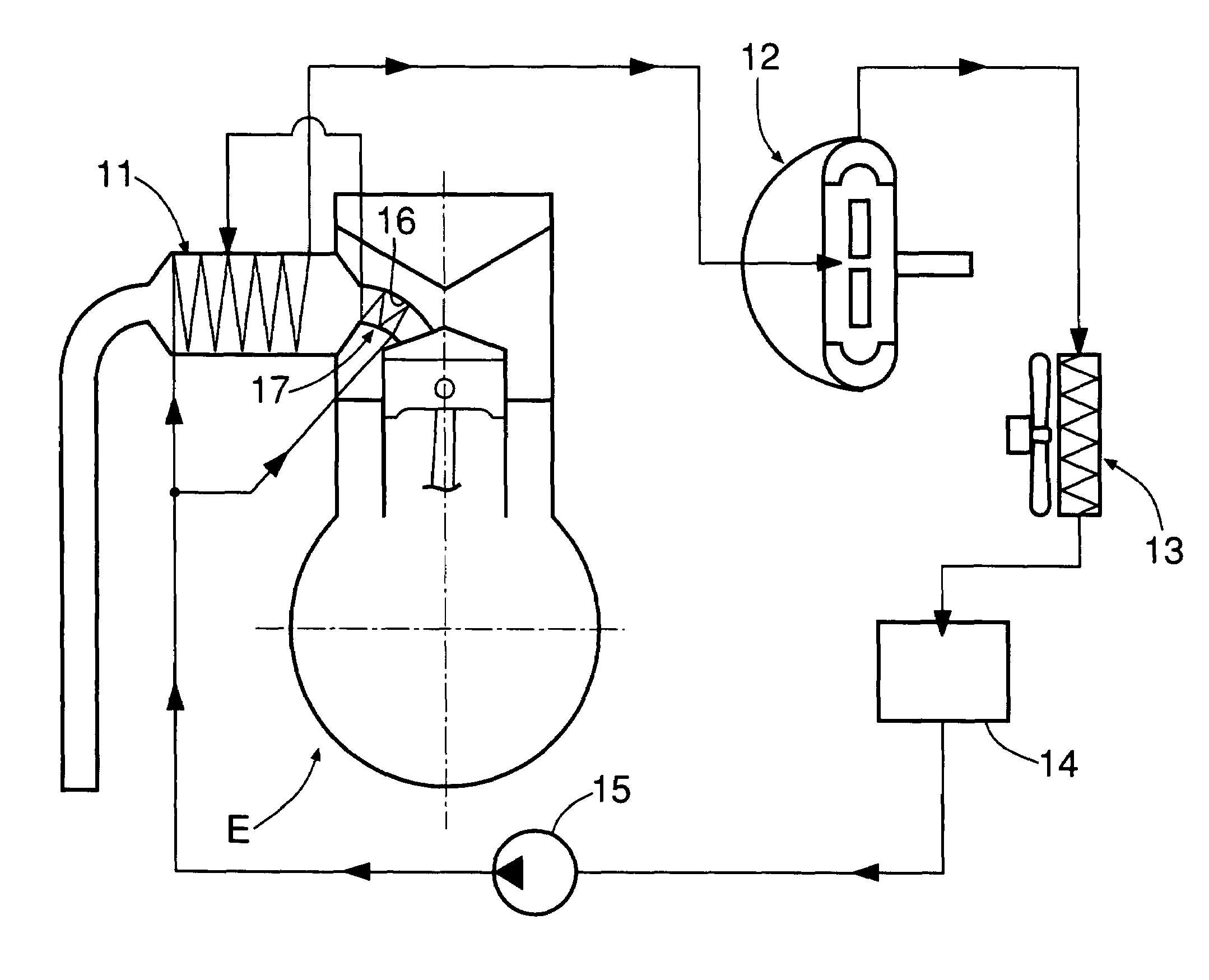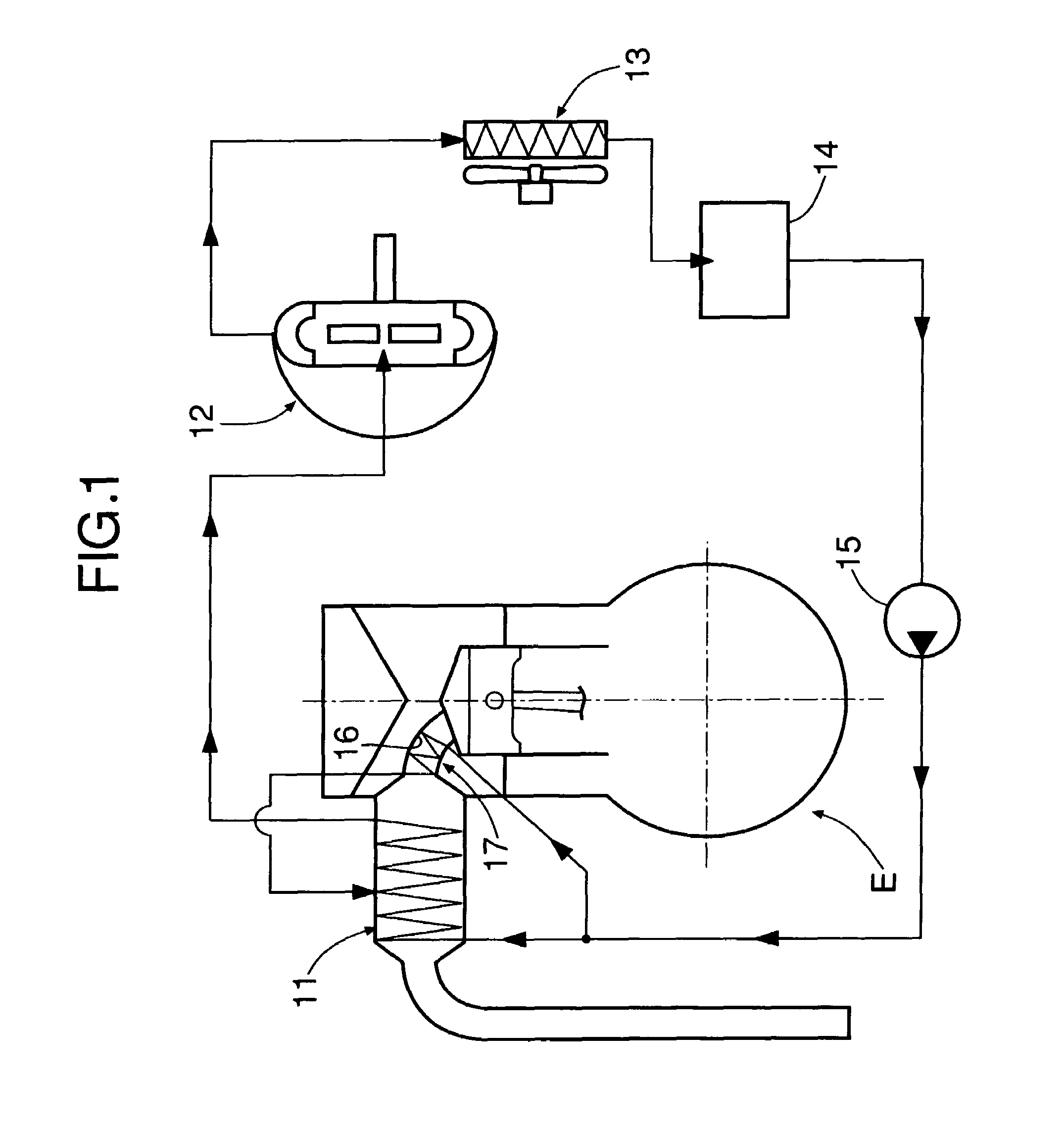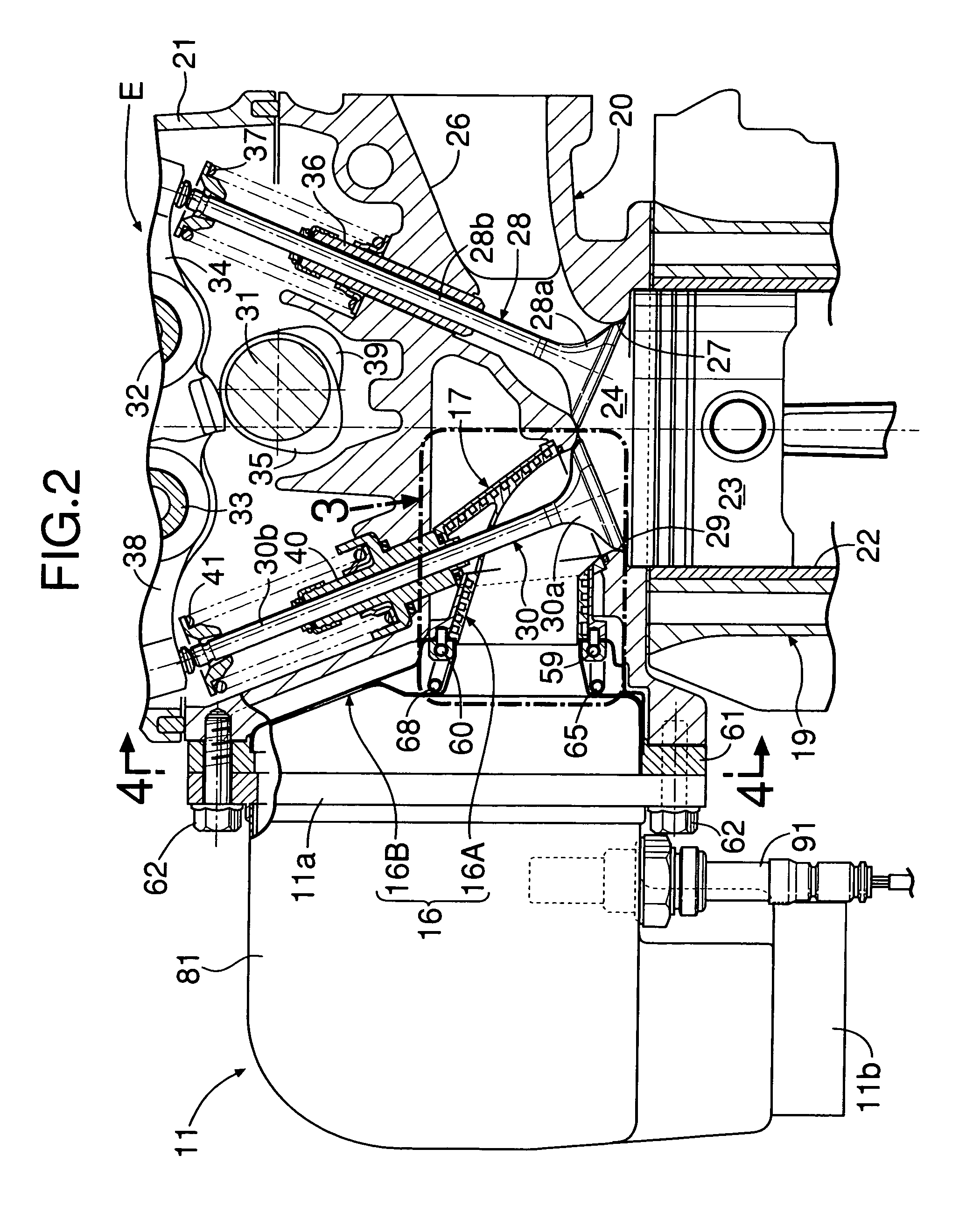Heat exchange system
a heat exchange system and heat exchange technology, applied in the direction of hot heat carrier steam generation, greenhouse gas reduction, lighting and heating apparatus, etc., can solve the problems of degrading the efficiency of heat recovery of internal combustion engines, increasing temperature, and difficulty in cooling the hottest section at the upstream end of the exhaust port sufficiently, so as to reduce the loss of thermal energy, suppress the dissipation of heat, and maintain the effect of heat exchange efficiency
- Summary
- Abstract
- Description
- Claims
- Application Information
AI Technical Summary
Benefits of technology
Problems solved by technology
Method used
Image
Examples
Embodiment Construction
[0043]An embodiment of the present invention is explained below with reference to FIG. 1 to FIG. 23.
[0044]FIG. 1 shows the overall arrangement of a Rankine cycle system to which the present invention is applied.
[0045]The Rankine cycle system, which recovers the thermal energy of an exhaust gas of an internal combustion engine E and converts it into mechanical energy, includes a main evaporator 11 that heats water with exhaust gas discharged from the internal combustion engine E so as to generate high temperature, high pressure steam, an expander 12 that is operated by the high temperature, high pressure steam generated by the main evaporator 11 so as to generate mechanical energy, a condenser 13 that cools decreased temperature, decreased pressure steam that has completed work in the expander 12 so as to turn it back into water, a reservoir tank 14 for collecting water discharged from the condenser 13, and a supply pump 15 for pressurizing the water collected in the reservoir tank 1...
PUM
 Login to View More
Login to View More Abstract
Description
Claims
Application Information
 Login to View More
Login to View More - R&D
- Intellectual Property
- Life Sciences
- Materials
- Tech Scout
- Unparalleled Data Quality
- Higher Quality Content
- 60% Fewer Hallucinations
Browse by: Latest US Patents, China's latest patents, Technical Efficacy Thesaurus, Application Domain, Technology Topic, Popular Technical Reports.
© 2025 PatSnap. All rights reserved.Legal|Privacy policy|Modern Slavery Act Transparency Statement|Sitemap|About US| Contact US: help@patsnap.com



